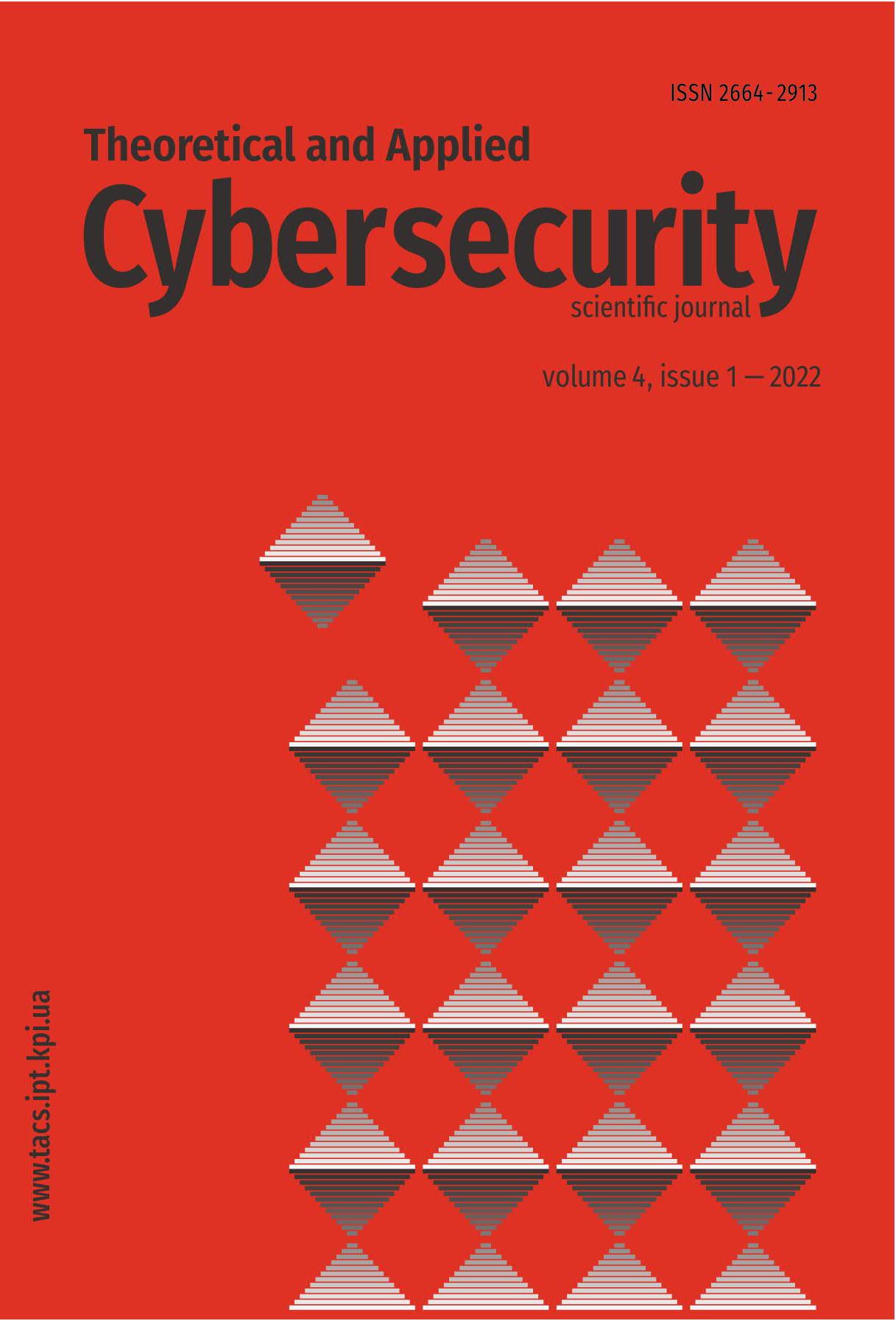Vulnerability detection in the network traffic flow of the RADIUS protocol based on the object-oriented model
DOI:
https://doi.org/10.20535/tacs.2664-29132022.1.274119Abstract
The RADIUS protocol was analyzed from the point of view of its functionality and security. The internal structure and the division into functions were shown. There were described the structure of the RADIUS network, the functions of the network access server or NAS, and the RADIUS server. The advantages of the centralized secure data processing technology based on the RADIUS protocol were shown. Mechanisms of secure processing of requests at the authentication and authorization stage were described. Sources and types of protocol vulnerabilities were studied and possible attack scenarios were identified. The relevance of creating models for evaluating the vulnerabilities of the RADIUS protocol was substantiated, and the methodology for building the model was chosen. An object-oriented model of the RADIUS protocol has been developed. A software application was developed and various attacks on the RADIUS protocol were tested. A number of potential vulnerabilities have been identified.
Downloads
Published
Issue
Section
License
Authors who publish with this journal agree to the following terms:
Authors retain copyright and grant the journal right of first publication with the work simultaneously licensed under a Creative Commons Attribution License that allows others to share the work with an acknowledgement of the work's authorship and initial publication in this journal.
Authors are able to enter into separate, additional contractual arrangements for the non-exclusive distribution of the journal's published version of the work (e.g., post it to an institutional repository or publish it in a book), with an acknowledgement of its initial publication in this journal.
- Authors are permitted and encouraged to post their work online (e.g., in institutional repositories or on their website) prior to and during the submission process, as it can lead to productive exchanges, as well as earlier and greater citation of published work (See The Effect of Open Access).

